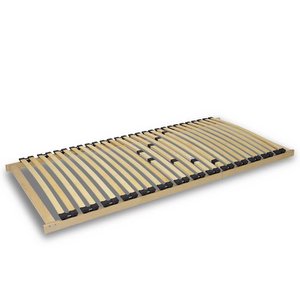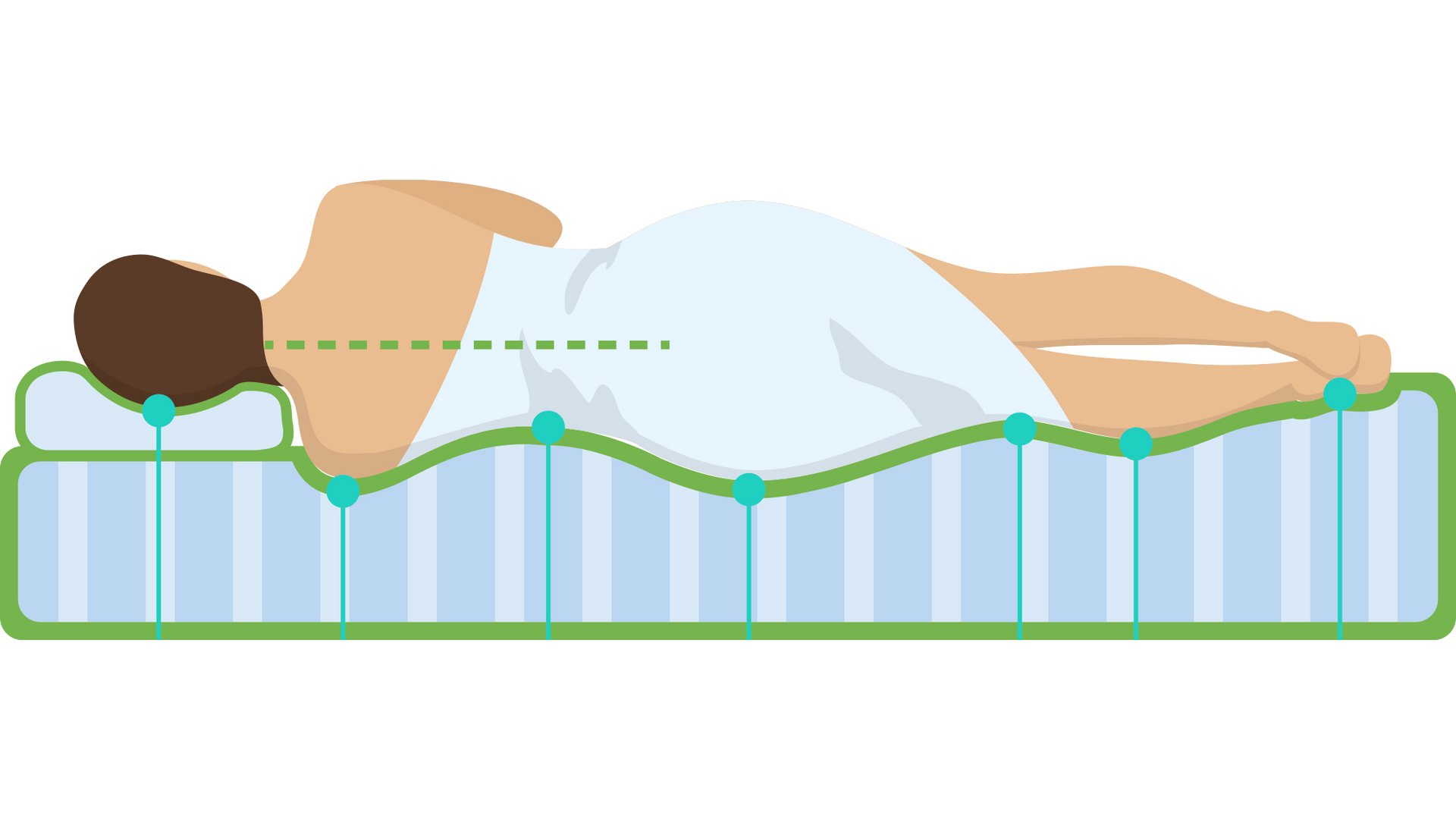Correct pressure relief for your spine with a 7-zone mattress
02. January 2024
What mattress zones or lying zones are there and what are the special features?
The 7-zone mattress or mattress with 7 lying zones is now regarded as the standard and is therefore the most widely used. Originally developed for
originally developed for medical use, the 7-zone mattress is characterized above all by the fact that its zoning is suitable for almost 90% of all adults.
adults. This is due to the fact that there is usually only a few centimetres difference in the distance from shoulder to hip in relation to the upper body, so that the lying zones of the 7-zone mattress and the intended body parts overlap accordingly. Compared to the 5-zone mattress, the 7-zone mattress has additional support zones for the lumbar spine and for the thighs. These zones are located in the upper and lower area of the central pelvic zone, which is therefore smaller in area than the 5-zone or 3-zone mattress.
Mattress zone 1 - head and neck or cervical spine
The support area for the head and neck is elastic and has medium to high firmness. Sufficient stability and load-bearing capacity is important in this zone so that the head does not sink deep into the mattress, but is supported in a stable manner. If the mattress is too flexible in this area, allowing the head to sink into the sleeping surface, this would distort the shape of the cervical spine and lead to overstretching of the neck muscles. With a correctly designed, suitable zone 1 mattress, this is reliably prevented - as described - and at the same time the surface is soft enough to provide sufficient pressure relief and thus prevent painful tension.

Mattress zone 2 - Shoulders
The lying zone for the shoulders is the softest area of the mattress. Due to the high degree of softness, the sleeping surface is particularly yielding here and allows the shoulder, shoulder blade and upper arm to sink in particularly deeply. Back pressure is thus largely reduced or, ideally, completely prevented, protecting the sensitive shoulder area from pressure points and circulatory problems. As the shoulder area of the body is generally wider than the torso and waist, the deeper sinking in of the shoulder and upper arm - especially when sleeping on the side - is important so that the spine remains in its natural shape and can regenerate optimally during sleep.

Mattress zone 3 - lumbar spine / lumbar support
Zone 3 in the ergonomic mattress layout of 7-zone mattresses is the support area for the lumbar spine, also known as the lumbar support or lumbar vertebrae zone. This area has a medium to high level of firmness so that the lumbar spine receives stable support. Supporting the sensitive lumbar vertebrae when lying down is important so that the spine is relieved and the blood circulation in the back is not disturbed.

Mattress zone 4 - hips / pelvis
Zone 4 of the 7-zone mattress and zone 3 of the 5-zone mattress support the pelvis and hips. This part of the body is heavier, which is why a certain amount of support is required. At the same time, the body with this large, heavy part must also be able to sink well into the sleeping surface so that the spine remains in shape and the lumbar vertebrae and intervertebral discs are relieved. It should also
pressure on the hip joints should also be relieved. The pelvic zone of the mattress has a medium firmness for these purposes.

Mattress zone 5 - thighs
The design of lying zone 5 of the 7-zone mattress is identical to zone 3 (lumbar vertebrae zone). It is known as the leg zone or thigh zone and is used to support the upper leg area. Its firm design ensures that the two body regions with the greatest length (torso and legs) are bedded in a stable and straight position.

Mattress zone 6 - Calves
In the 7-zone mattress, zone 6 or the calf zone is identical to the support area for the shoulders (zone 2) and is therefore relatively soft. This is beneficial for blood circulation in the lower leg area, as the veins are not constricted and are therefore relieved. This effectively prevents unpleasant calf cramps at night.

Mattresses zone 7 - Feet
Body zone 7 of the mattress with 7 zones corresponds to zone 1 for the head and neck. It is therefore characterized by greater firmness so that the joints cannot twist or bend. At the same time, the ankle, ankle and heel in zone 7 of the mattress are also supported in such a way that they are not exposed to pressure in order to prevent pain (keyword: pressure relief).

Where is the top and bottom of multi-zone mattresses?
With 5-zone mattresses, 7-zone mattresses and 9-zone mattresses, the lying zones are usually arranged symmetrically in terms of the division of the zones on one side of the mattress. Questions such as "Where is the top of a 7-zone mattress?" can therefore be answered by saying that there is no top and no bottom. Accordingly, it does not matter how the mattress is inserted into the bed frame. The mattress can be turned regularly (approximately every two to three months) to ensure even wear and longer durability.
Suitable slat base for a multi-zone mattress
Even the best mattress can generally only achieve its full ergonomic functionality if it is used together with a suitable slat base. A slatted frame is usually used in conventional beds. To ensure that the slatted frame can optimally support the zone mattress, its zoning should match the zoning of the mattress. For example, 7-zone slatted frames have shoulder and pelvic comfort zones with greater flexibility, so that the particular flexibility of the mattress in these sensitive support areas (zone 2 and zone 5 for 7-zone mattresses - see: Which mattress zones or lying zones are there and where are the special features?) is optimally promoted.
Many slatted frames can also be adjusted using sliders and adapted to your own sleeping habits and personal requirements.

